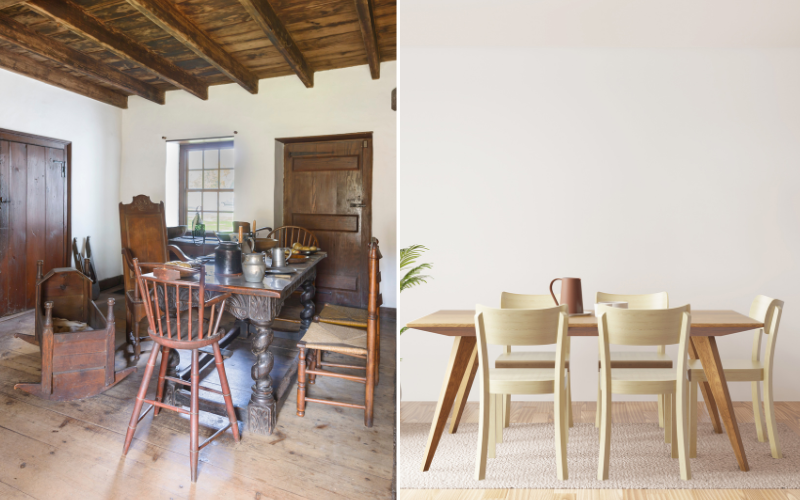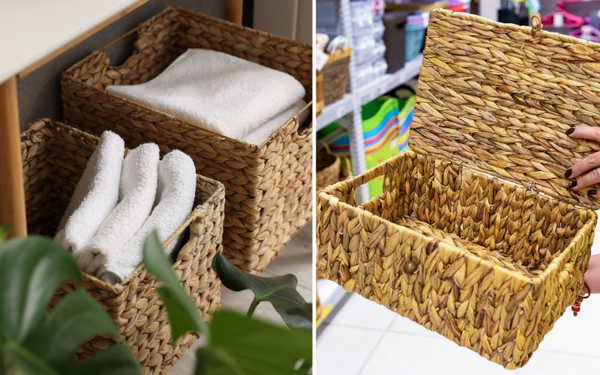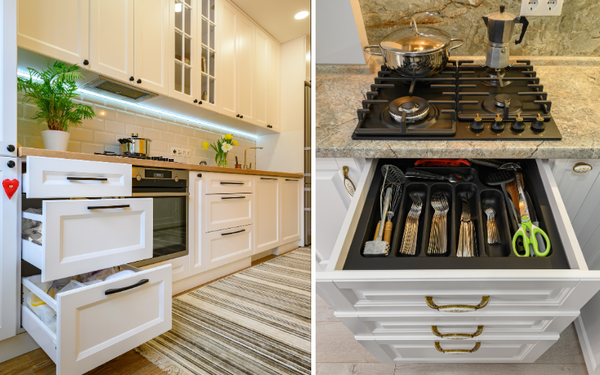Is solid wood good for dining table? The answer is clear: solid wood is a strong, long-lasting choice for dining areas. This material not only supports daily use but also brings a natural elegance to any room. Our discussion will cover the practical aspects of solid wood dining tables, from grain patterns and maintenance to environmental impacts and cost considerations, giving you the insights you need for your furniture decision.
Key Takeaways
- Solid wood dining tables are valued for their unique grain patterns, color and texture variations, and their capacity to act as statement pieces that transform the dining space ambiance with elegance and warmth.
- The durability, resilience against damage, easy maintenance, and potential for refinishing make solid wood a practical material for dining tables that can withstand daily usage and last for generations.
- Choosing eco-friendly solid wood tables, such as those made from reclaimed wood or responsibly sourced hardwoods, can have a positive environmental impact while adding character and sustainable value to the home.
The Enduring Charm of Solid Wood Tables
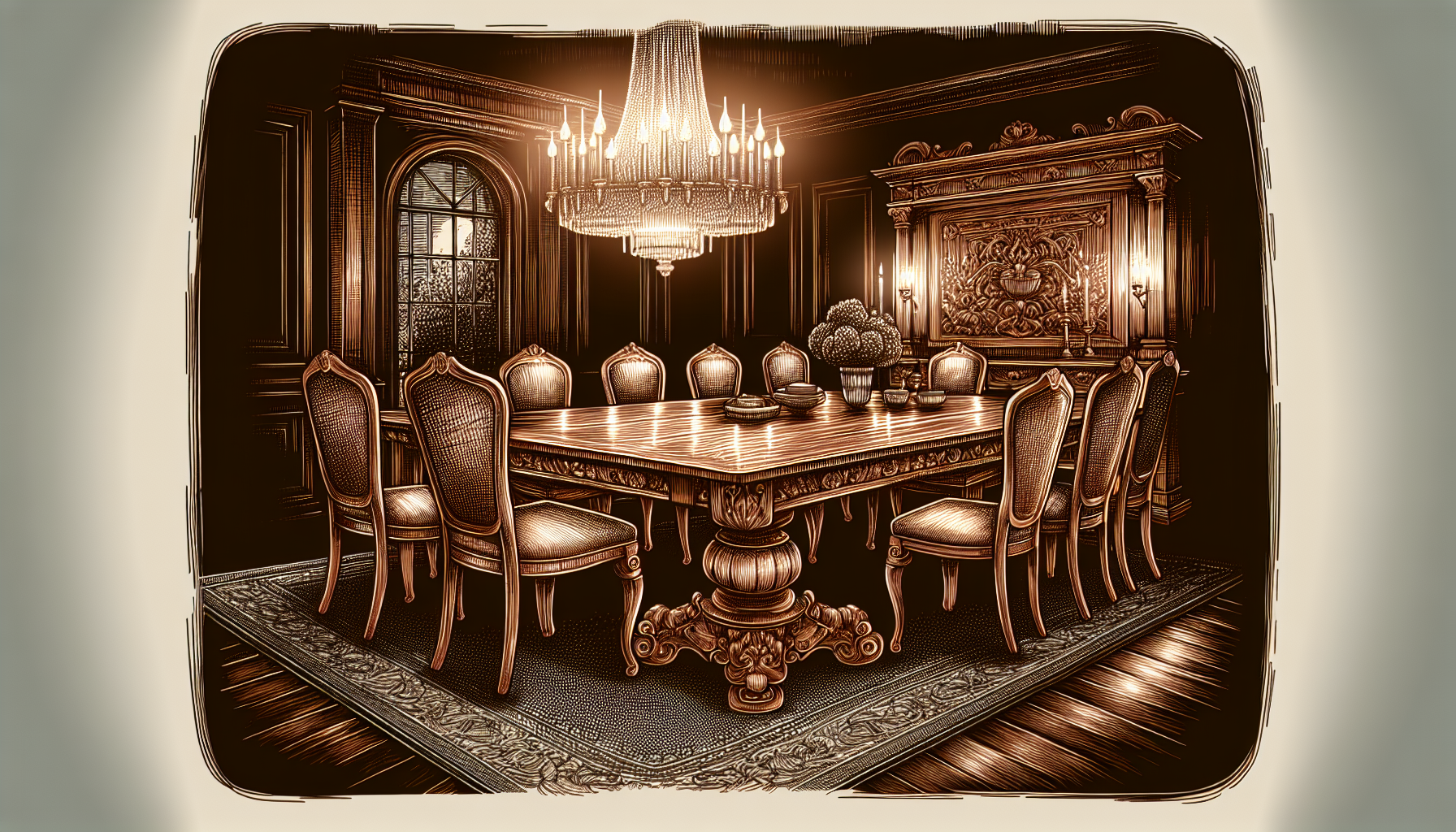
Solid wood dining tables serve as more than just a surface for your meals; they stand as statement pieces, radiating elegance and warmth in your dining room. They are fitting for larger spaces due to their grandeur and offer a richness and comfort that become the cornerstone of numerous gatherings.
Each handcrafted wooden dining table tells a story, its design and craftsmanship imbuing your dining space with an unspoken narrative of artistry. The rustic charm and texture of solid wood or reclaimed wood tables anchor a room, elevating the design with their color and finish. A wooden table can truly transform the atmosphere of your dining space.
The Appeal of Grain Patterns
Each solid wood dining table serves as a canvas, displaying nature’s masterpiece. The grain patterns are the brushstrokes of this art, offering a glimpse into the life and history of the tree it once was. Oak wood, for instance, displays a tight grain that captivates the eye with its intricate rays and flecks, while maple wood boasts a uniform grain, presenting a serene and consistent aesthetic.
Contrastingly, walnut varieties, like black and Claro, bring a sophisticated flair with their fiddleback patterns, ensuring that each wooden dining table is as unique as the home it graces.
Color and Texture Variations
The grain pattern is just the beginning; the color and texture variations in wood types enrich the dining room’s visual appeal and reflect interior design preferences. Imagine white oak’s grayish tones bringing an air of minimalist Scandinavian design to the space, while red oak’s light brown shade, with a subtle reddish tint, adds traditional warmth.
Maple offers a spectrum from creamy hues to a deeper reddish-brown, catering to a diversity of tastes. With such variety, dining tables made of different wood types not only introduce a broad color palette but also an array of textures and patterns, each enhancing the room’s aesthetic in its unique way.
Durability and Longevity of Solid Wood Furniture
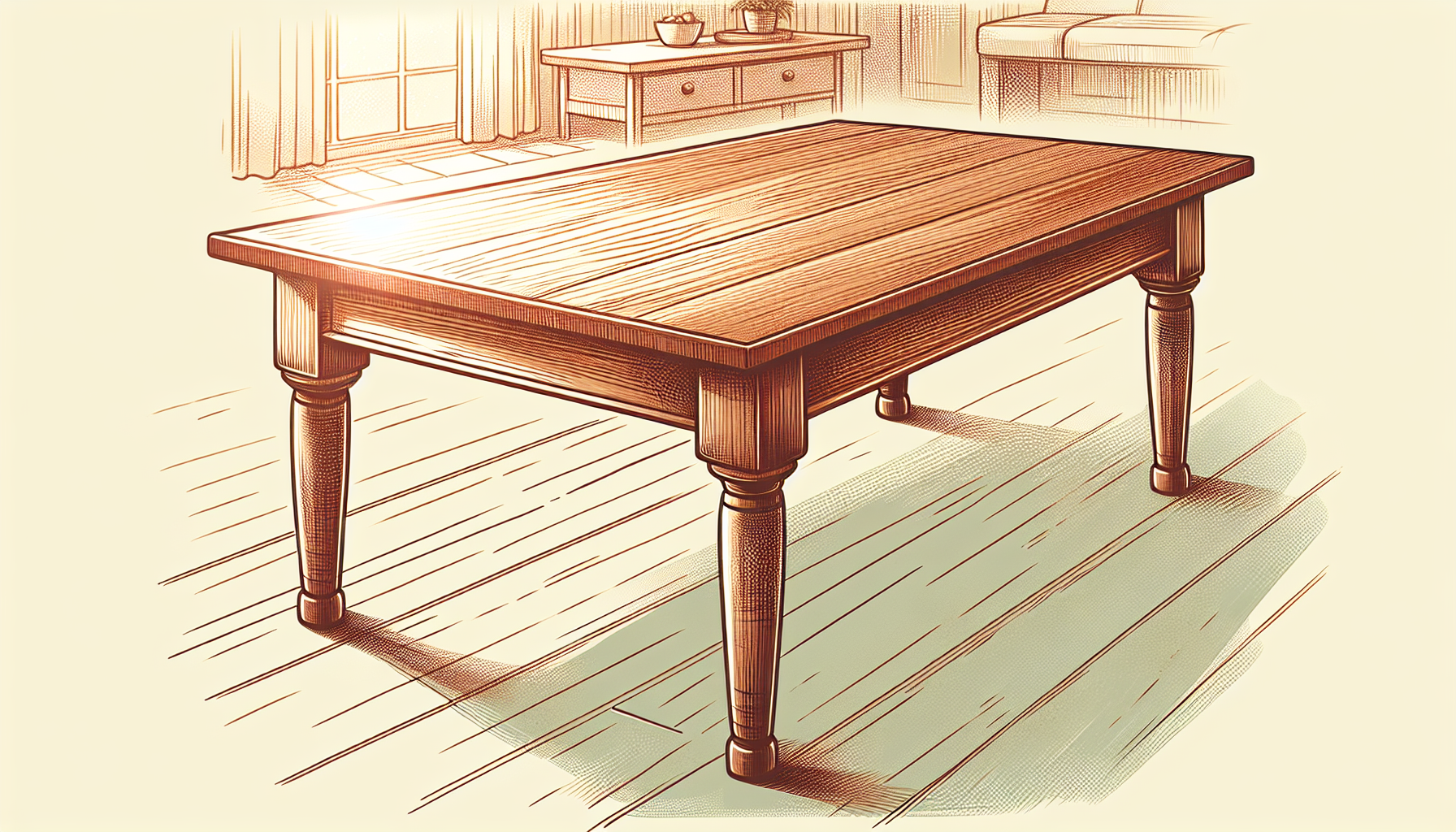
Solid wood, known for its strength and durability, is an ideal choice for high-use furniture such as dining tables. Known for its hard-wearing nature, solid wood can endure the daily wear and tear of family meals, homework sessions, and festive feasts with unmatched resilience. This durability is not uniform across all wood species, as demonstrated by the range of Janka hardness ratings: Red Oak stands at 1290, Hard Maple at 1450, and Hickory at a robust 1820, indicating their suitability for various home styles and uses.
With the right care, these tables can serve as a robust focal point for generations, their enduring style a testament to their long-lasting quality. Woods like oak, teak, and acacia are particularly practical for dining tables due to their resilience to wear, adding to the variety of durable options available.
Resilience Against Damage
The dense wood of solid tables holds its own against life’s little mishaps. Thanks to their robust material, these tables have inherent resistance to scratches and dents, guaranteeing their centrality in your dining space for many years. While solid wood generally holds up well against damage, some types like Red Oak are softer and may show signs of wear with heavy use.
Compared to other materials such as veneer, solid wood offers a level of resilience that engineered wood simply cannot match, making it the more reliable choice for a family heirloom.
Ease of Maintenance
Maintaining the timeless appeal of solid wood is surprisingly simple. These tables require only minimal upkeep. Here are some tips to keep them looking as good as new:
- Regularly swipe with a damp cloth
- Occasionally polish
- Protect the wood with a sealant like polyurethane
- Use coasters and placemats to prevent damage
By following these tips, you can preserve the smooth finish and ensure the table’s durability for years to come.
To avoid damage from harsh chemicals or exposure to direct sunlight and heat, gentle cleaning methods are recommended, ensuring the wood’s natural beauty is retained without compromise.
Versatile Wood Types for Every Style
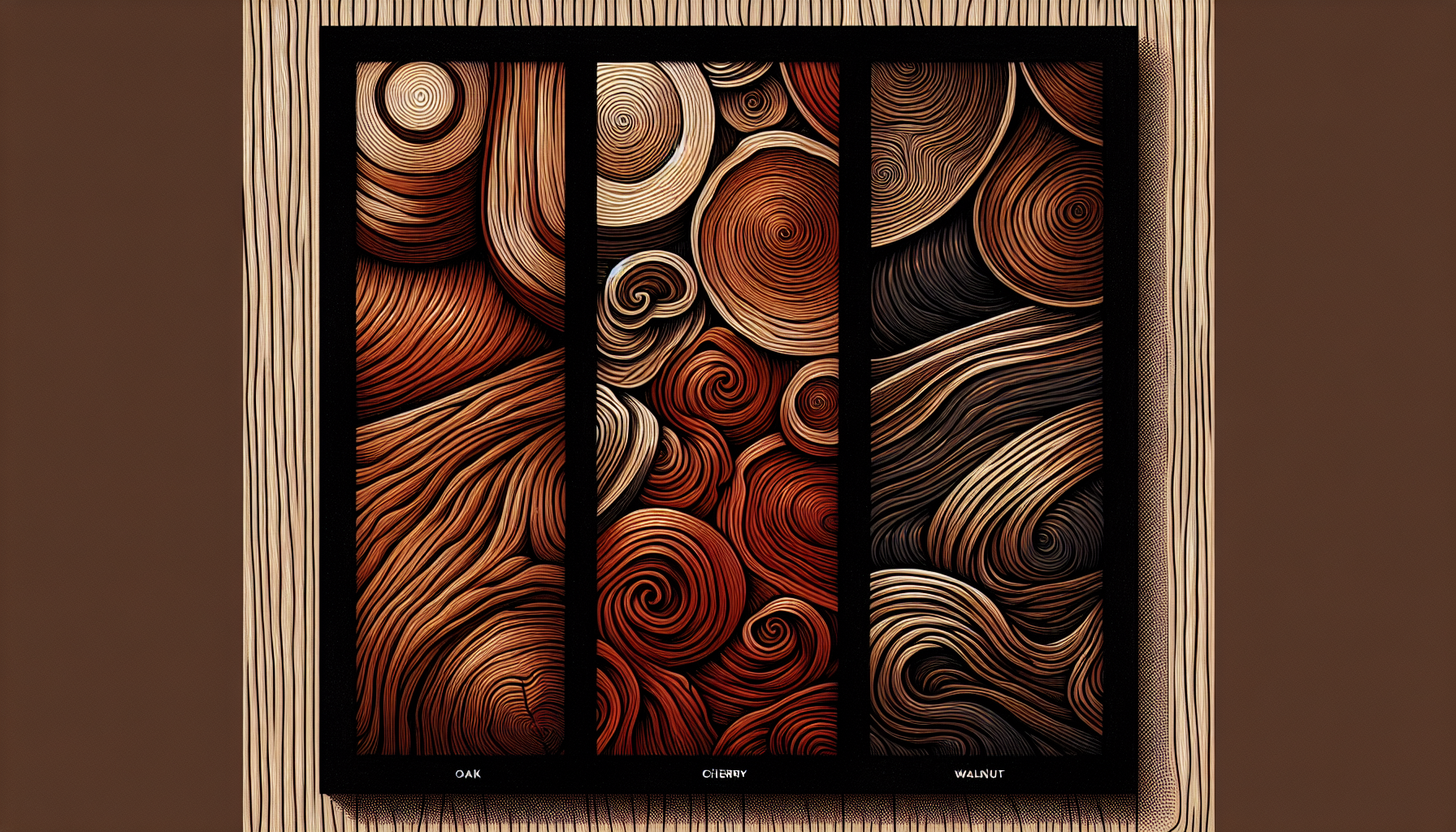
Choosing a solid wood dining table introduces you to a variety of hardwoods, each with its unique benefits and character. Some high-quality options available are:
- Walnut
- Cherry
- Maple
- Oak
These woods offer a range of aesthetic and practical qualities to suit any dining room. For those seeking sustainable and versatile furniture design, specialized woods like Suar and Mango offer unique advantages.
Hardwoods with pronounced grain patterns like white and red oak, cherry, and walnut contribute to diverse aesthetic options. Each wood species allows for a wide variety of creative designs, with oak’s high durability and stainability making it a particularly versatile choice for a dining table. Maple and teak stand out with their distinct characteristics, such as maple’s fine texture and uniformity and teak’s exceptional strength and moisture resistance, while soft maple and walnut are favored for their balance between maintenance and quality.
The cost of a solid wood dining table often reflects the type of hardwood used and the craftsmanship involved, with premium woods like oak, maple, cherry, and walnut commanding higher prices. The versatility of woods like walnut and birch allows for a wide range of styles, from the bold darkness and contemporary flair of walnut to the lighter, more uniform appearance of birch.
Oak Wood: A Symbol of Strength and Elegance
Oak wood exemplifies the enduring appeal of solid wood dining tables with its timeless elegance. This wood is not only durable, adding to the table’s longevity, but it also provides a classic aesthetic that can be appreciated for generations. Oak’s durability is further highlighted by its timeless elegance, ensuring that tables made from oak can withstand generations of use.
Red oak, in particular, offers affordability alongside its strength, making it an excellent choice for those looking to invest in a budget-friendly hardwood dining table.
Cherry Wood: Warm Tones and Refined Texture
With their warm tones and refined texture, cherry wood dining tables exude sophistication. The wood’s reddish-brown color, which deepens to a rich red-brown with sunlight exposure, adds a touch of natural elegance to any dining space.
The heartwood of cherry has the following characteristics:
- Varies from a rich red to reddish brown
- Can be enhanced with cherry stains to increase warmth
- Has a closed grain texture
- Easy to maintain
- Durable, ensuring a long-lasting dining table
These characteristics make cherry a beautiful and practical choice for a dining table.
Walnut Wood: Bold Darkness and Contemporary Flair
Walnut wood adds a bold and contemporary flair to dining tables, making it perfect for modern interiors seeking a statement piece. Celebrated for its deep, dark brown hue, walnut wood dining tables are sophisticated and dramatic, making them exceptional choices for standout furniture.
The rich palette of this wood includes:
- chocolate
- purplish brown
- grey
- black
- golden streaks
Coupled with lively grain patterns that ensure each table is a captivating centerpiece. Walnut’s darker look and hard, dense nature make it a superb choice for contemporary dining furniture.
The Practical Benefits of Choosing Solid Wood
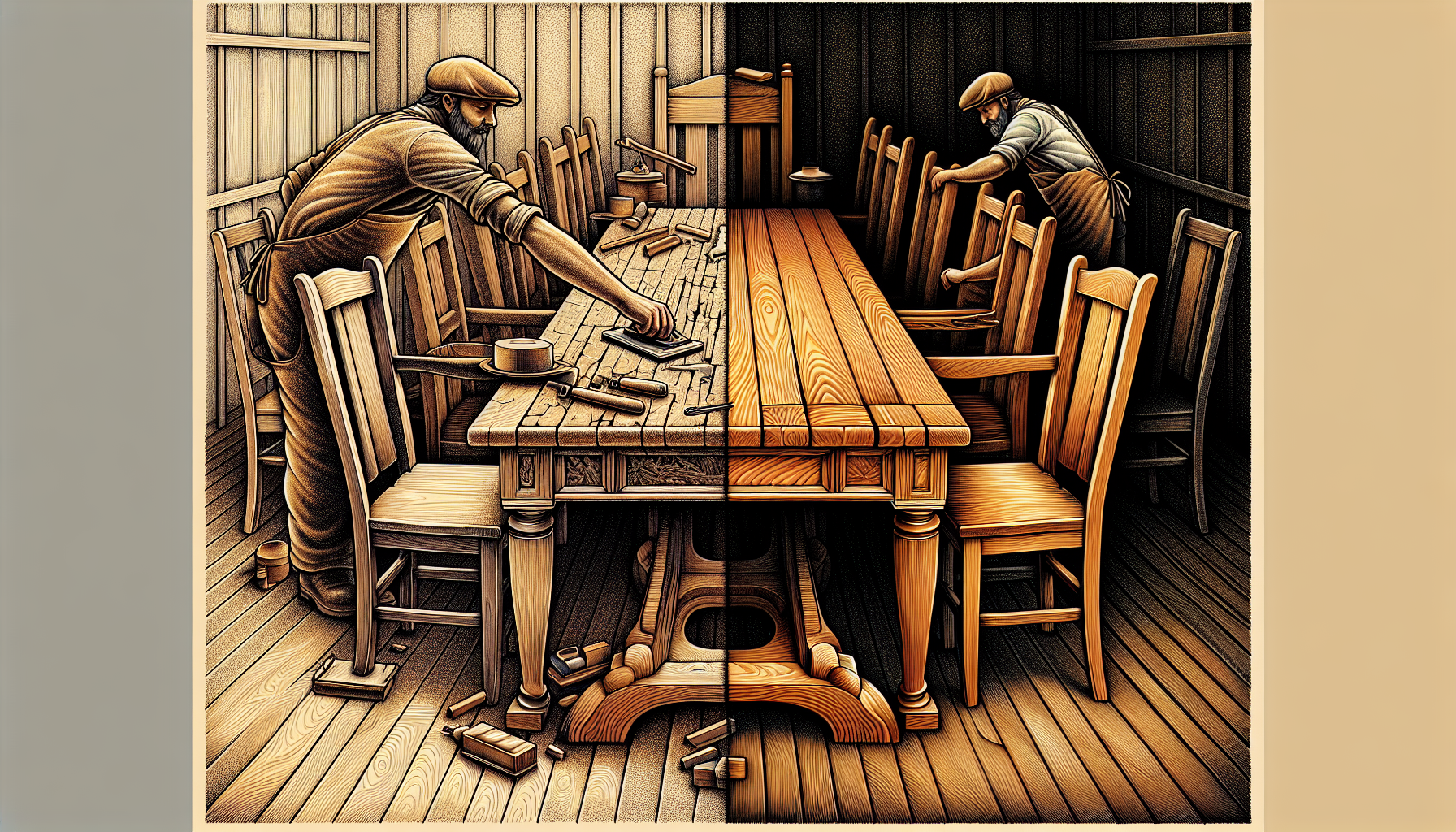
Beyond being aesthetically pleasing, solid wood dining tables have several advantages:
- They are practical investments capable of enduring daily meals and conversations.
- They maintain their sturdiness over time, even with accidental spills and the wear and tear that comes with being the centerpiece of a home.
- These tables are also easy to maintain, requiring only simple and consistent cleaning to keep them in excellent condition.
Furthermore, solid wood dining tables remain stylish over time, adapting to evolving trends and personal style changes.
Refinishing and Repairs
The allure of a solid wood table lies in its adaptability, growing with you by adjusting to new trends and personal preferences through refinishing and repairs. Here are some benefits of solid wood furniture:
- Refinishing: It involves stripping off the old finish, sanding the surface, and applying new stain and protective coatings to refresh the table’s appearance.
- Easy to repair: Solid wood furniture is not only easy to repair, but it also offers the option for regular refinishing to maintain its condition.
- Customization: This adaptability allows for customization to match various decors through staining or painting.
- Space requirements: Solid wood furniture can be refurbished or altered to fit different space requirements.
The longevity of solid wood dining tables is further extended as they can be refinished multiple times, allowing them to adapt to new trends and maintain their beauty over many years. During manufacturing, care is taken to remove knots to prevent warping and cracking, ensuring a stable and long-lasting product. Additionally, solid wood dining tables are crafted with non-toxic finishes, promoting a healthier home environment.
Due to the long-term value of solid wood, investing in a high-quality solid wood dining table can be more cost-effective than opting for cheaper, less durable alternatives.
Adapting to Space Constraints
Regardless of whether you’re hosting a lavish dinner in a spacious dining room or having a cozy meal in a small space, solid wood dining tables can flexibly meet your needs. For smaller dining areas, round or oval tables are ideal as they save space by eliminating corners while fostering a more intimate dining experience. Rectangular tables are particularly suitable for narrow dining spaces, making efficient use of the available area. When selecting a table for a small space, it’s important to consider the table’s proportions in relation to the dining area’s size and the number of diners expected.
With a variety of shapes and sizes available, including rectangular and round, solid wood tables can suit different spatial requirements and design preferences.
Environmental Consideration for Your Dining Table

As our environmental awareness grows, the choice of a dining table becomes a reflection of our values. Solid wood dining tables are considered a sustainable option when the wood is sourced responsibly from managed forests or made from reclaimed wood.
Reclaimed wood tables, in particular, emphasize sustainability and eco-conscious design, offering rustic charm while helping reduce the demand for new timber. Wooden tables made from reclaimed wood are a perfect example of this approach.
Reclaimed Wood: Eco-Friendly and Full of Character
Reclaimed wood for dining tables offers several benefits:
- It supports environmental sustainability by reducing waste and the need for fresh timber.
- It brings a unique story and character to your dining space.
- Using recycled materials in furniture production can contribute to a lower carbon footprint for the industry.
Each piece of reclaimed wood dining table carries its history, adding a distinctive rustic charm that is unparalleled. Ensuring that reclaimed wood is sourced from reputable suppliers guarantees the quality, authenticity, and safety from harmful contaminants.
Responsible Sourcing Practices
Responsible sourcing is more than a buzzword; it’s a commitment to the planet and future generations. Certification programs such as the Forest Stewardship Council (FSC) and the Programme for the Endorsement of Forest Certification (PEFC) ensure that the solid wood used in dining tables comes from responsibly managed forests. This approach to sourcing has a positive impact on the environment, helping forests act as effective carbon sinks and playing a role in climate change mitigation. Responsible sourcing also respects the rights and traditions of indigenous communities, ensuring their participation and benefit-sharing in the forestry sector.
Furthermore, it promotes economic stability in areas reliant on wood production, providing a consistent and sustainable supply of wood materials.
Cost vs. Quality: Is Solid Wood Worth the Investment?
Despite the higher initial cost compared to other materials, the durability of solid wood furniture and potential for long-term savings makes wooden furniture a worthwhile consideration. Such furniture can even increase in value over time, becoming timeless pieces that add worth to a home.
If well-maintained, a solid wood dining table can yield a considerable return if resold, offering financial benefits to the owner.
Understanding Price Points
Various factors influence the price points of solid wood furniture, such as build quality, craftsmanship, and design features. Higher build quality typically comes with a higher cost due to its longevity, and custom-made solid wood dining tables are priced above mass-produced ones owing to the specialized craftsmanship involved. Labor costs also play a role in the overall price of solid wood dining furniture, reflecting the skill and expertise required to produce high-quality items.
Design features such as built-in storage or enhancements for added comfort can increase the price of solid wood dining tables. The total cost of ownership for solid wood furniture encompasses not just the purchase price but also additional expenses such as delivery and assembly services.
Long-Term Savings
The high durability of solid wood furniture offers several benefits:
- Pieces often need replacing less frequently compared to other materials, leading to long-term cost savings.
- Solid wood furniture is a valuable investment that endures through the years.
- It offers both aesthetic and financial benefits.
Summary
As we’ve journeyed through the world of solid wood dining tables, we’ve uncovered the layers that make them so desirable. From the rich, intricate grain patterns and the spectrum of colors and textures to the unmatched durability and ease of maintenance, solid wood tables stand as wise investments for your dining space. They adapt to both style and space, evolve with your tastes, and even contribute positively to the environment when sourced responsibly. Considering their longevity, the ability to refinish and repair, and their potential to become more valuable over time, solid wood dining tables are indeed worth the investment.
Let the dining table you choose be one that tells a story, embraces memories, and grows with your family. Solid wood, with its timeless elegance and robustness, is not just furniture – it’s a heritage passed down through meals and moments. It’s an investment that pays dividends in durability, beauty, and sustainability. As you gather around your table, know that you’ve chosen a mealtime centerpiece that will serve as the enduring heart of your home for generations to come.
Frequently Asked Questions
Can solid wood dining tables withstand daily use without getting damaged?
Yes, solid wood dining tables can withstand daily use without getting damaged, as they are highly durable and naturally resistant to wear and tear.
Are solid wood dining tables difficult to maintain?
Maintaining a solid wood dining table is not difficult at all. Regular dusting and occasional polishing are generally sufficient to keep it looking great.
What environmental benefits do solid wood dining tables offer?
Solid wood dining tables offer environmental benefits such as sustainability when made from responsibly sourced or reclaimed wood, which reduces waste and supports environmental conservation. Invest in solid wood tables for a more eco-friendly choice.
Is it possible to refinish solid wood dining tables?
Yes, solid wood dining tables can be easily refinished to refresh their look or adapt them to new interior designs over time.
How do the costs of solid wood dining tables compare in the long run?
Solid wood dining tables may have a higher initial cost, but they can be more economical in the long run due to their exceptional durability and potential for long-term savings from less frequent replacements.
You Might Also Like...
